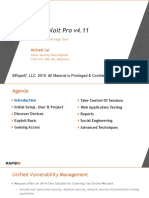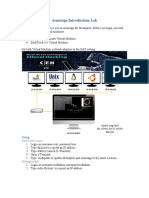0% found this document useful (0 votes)
14 views12 pagesMetasploit Exploitation
The document provides an overview of Metasploit, a powerful open-source framework for penetration testing and exploitation, detailing its functionalities such as scanning target systems, service discovery, and database management. It emphasizes the importance of using Metasploit's database feature for organizing scan results and findings, as well as the role of vulnerability scanning in identifying security weaknesses. Additionally, it outlines the process of using Metasploit for exploitation after identifying targets and vulnerabilities.
Uploaded by
Sh RahatCopyright
© © All Rights Reserved
We take content rights seriously. If you suspect this is your content, claim it here.
Available Formats
Download as PDF, TXT or read online on Scribd
0% found this document useful (0 votes)
14 views12 pagesMetasploit Exploitation
The document provides an overview of Metasploit, a powerful open-source framework for penetration testing and exploitation, detailing its functionalities such as scanning target systems, service discovery, and database management. It emphasizes the importance of using Metasploit's database feature for organizing scan results and findings, as well as the role of vulnerability scanning in identifying security weaknesses. Additionally, it outlines the process of using Metasploit for exploitation after identifying targets and vulnerabilities.
Uploaded by
Sh RahatCopyright
© © All Rights Reserved
We take content rights seriously. If you suspect this is your content, claim it here.
Available Formats
Download as PDF, TXT or read online on Scribd
/ 12




























































































